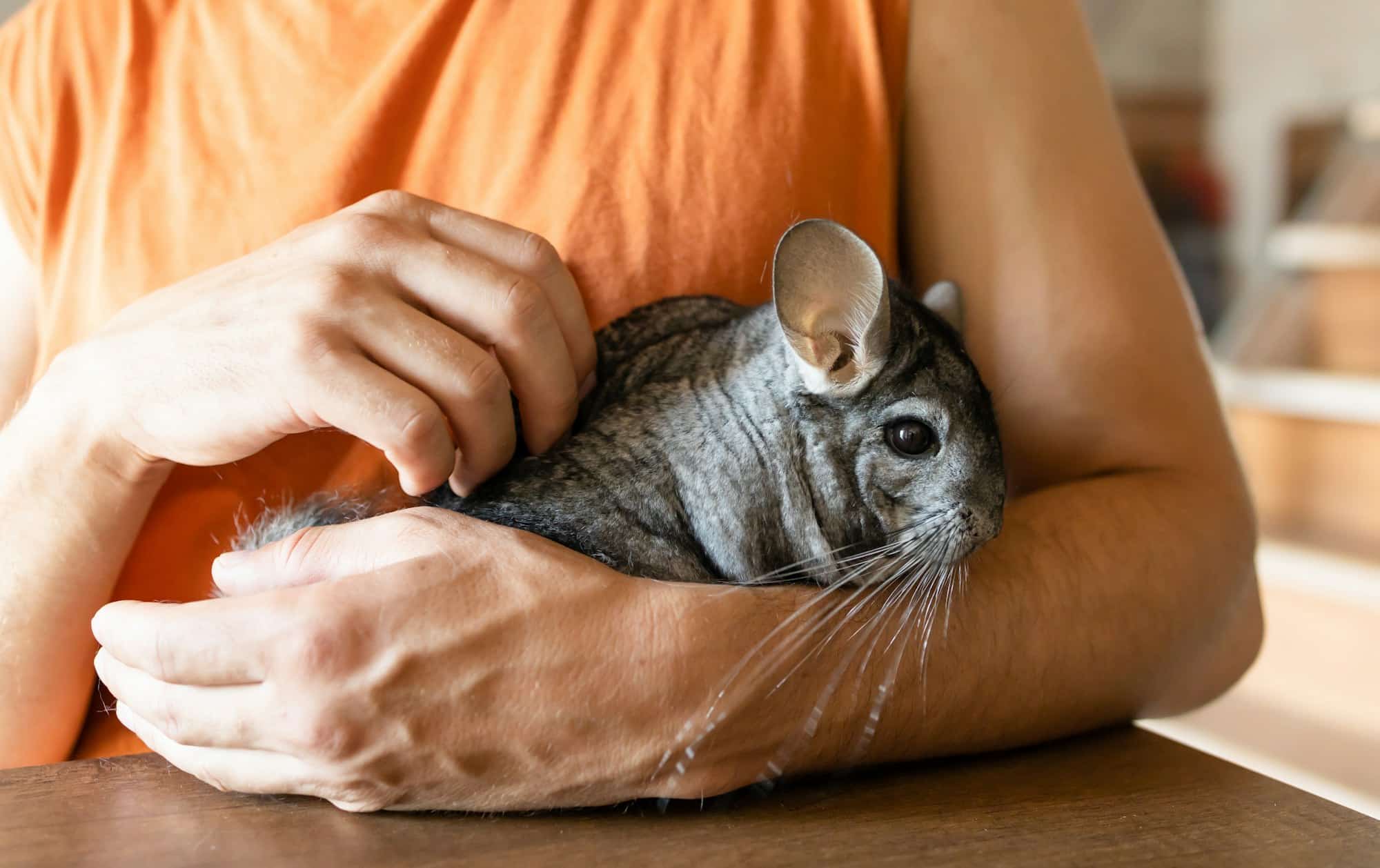With their luxuriously soft fur and twitchy noses, chinchillas have charmed their way into countless households across the globe. These small, lively animals can make excellent pets, bringing joy and companionability into your world. However, as pet owners, you also bear the critical responsibility of safeguarding your chinchilla’s health and wellbeing. One aspect that requires particular attention is their susceptibility to heatstroke.
Understanding Why Chinchillas are Prone to Heatstroke
Before we delve into the details of recognizing and managing heatstroke in chinchillas, let’s first understand why these petite pets are particularly prone to this condition.
Dans le meme genre : How to Develop a Comprehensive Desensitization Plan for a Dog with Noise Phobias?
Chinchillas originate from the chilly Andean mountains of South America, where they have evolved over millennia to survive in cold, high-altitude environments. Their dense, velvety fur, which is their most distinctive trait, is also their defence mechanism against freezing climes. However, this marvellous adaptation is also a disadvantage in warm weather.
The fur of a chinchilla, so sumptuously thick that parasites cannot penetrate it, unfortunately also prevents them from dissipating heat effectively, making them prone to overheating. The impact of heat is further exacerbated if your home lacks sufficient cool spots or if their cage is mistakenly placed in direct sunlight. Water and dust baths, which these animals use to keep their fur clean and silky, can also become scarce during hot periods, further heightening the risk of heatstroke.
Sujet a lire : What Are the Essential Features of a High-Quality Outdoor Dog Kennel?
Recognizing the Signs of Heat Exhaustion in Your Chinchilla
Heatstroke is a serious condition that can rapidly escalate if not caught early. Therefore, it’s crucial to be aware of the signs of heat exhaustion, the precursor to heatstroke.
The first sign of heat exhaustion in chinchillas is a noticeable change in behavior. Your pet may start panting heavily, moving sluggishly, or start drooling, all of which are rather atypical behaviors for these otherwise spry animals.
Another sign is if your chinchilla indulges in excessive grooming, trying to remove the warmth from their fur, or if they spread out on a cool surface to attempt to lower their body temperature. In severe cases, they may even display signs of confusion or lethargy, and they might not respond to stimuli as they normally would.
Also, monitor their appetite and water consumption. Chinchillas suffering from heat exhaustion may drink more water than usual or eat less hay, their primary source of food.
Taking Immediate Action to Cool Down Your Chinchilla
If you suspect that your chinchilla is experiencing heat exhaustion, immediate action is required. Your primary goal will be to lower their body temperature gradually but not too rapidly as it can lead to shock.
Transfer your chinchilla to a cooler part of your home, preferably one that’s well-ventilated and away from direct sunlight. You can also provide a cool slab of tile or granite for them to lie on, or lightly mist their fur with cool – but not cold – water.
Ensure they have access to plenty of fresh water to rehydrate. You can also offer some cool (not chilled), finely chopped fruits or veggies to help keep them hydrated.
When to Seek Vet Intervention
Despite your best efforts, there may be times when your chinchilla’s condition does not improve or worsens. In such cases, it becomes imperative to seek professional help.
Vets trained to treat small mammals like chinchillas will be equipped to manage heat exhaustion more effectively. They may administer subcutaneous fluids, recommend specialized care, or provide medication to prevent further complications.
Remember, a chinchilla’s teeth, which continually grow, can be affected by heat stress, leading to drooling or difficulty in eating. A vet can assess this as part of their intervention.
Preventive Measures to Keep Your Chinchilla Cool
Prevention, as often said, is better than cure. By taking some simple precautions, you can help keep your pet chinchilla cool and reduce their chances of suffering from heat exhaustion.
First, keep their cage in a cool, well-ventilated spot away from direct sunlight. The ideal temperature for chinchillas is between 15°C (60°F) and 21°C (70°F). Anything above this can prove uncomfortable and even hazardous for them.
Ensure your chinchilla has access to fresh water at all times. Similarly, regular dust baths can help your pet manage their body temperature.
Finally, consider investing in a pet-friendly cooling pad or provide a ceramic tile for your chinchilla to lounge on during hot days. These measures can help them maintain their body temperature and prevent overheating.
Remember, while chinchillas are wonderfully playful and endearing pets, they also have unique care requirements, particularly in relation to their susceptibility to heatstroke. As a responsible pet parent, you must ensure you understand these needs and take the necessary steps to keep your fur baby healthy and comfortable.
Adapting Your Chinchilla’s Environment to Prevent Heat Stroke
Having a pet chinchilla is an exciting experience. Yet, because they’re native to cold environments, it’s essential to modify their living conditions to match their natural habitat. This can help prevent heat stroke, a condition that chinchillas are particularly susceptible to.
Begin by ensuring that your chinchilla cage is located in a cool and well-ventilated area. Do be aware that chinchillas are nocturnal creatures, so they should be kept somewhere quiet and peaceful during the day. Avoid keeping the cage under direct sunlight, as this can quickly increase their cage’s temperature.
You should aim to maintain the temperature of your chinchilla’s environment between 15°C (60°F) and 21°C (70°F). A room thermometer can help you keep a close eye on the temperature. If you live in a region with a warm climate, consider investing in an air conditioner or a fan for your pet’s room.
In addition to temperature control, dust baths are another crucial part of their heat management routine. Native to the chilly Andean mountains, chinchillas use volcanic ash to clean their skin and fur. This behavior not only helps them stay clean but also aids in regulating their body temperature.
Lastly, giving your pet chinchilla access to a cool surface, like a ceramic tile, can be beneficial. When the temperature rises, they can lie on this cool surface to bring down their body temperature.
Conclusion: Your Pet Chinchilla’s Health is in Your Hands
In conclusion, safeguarding your pet chinchilla’s health requires understanding their unique needs. Heat stroke is a significant concern for these adorable creatures, but by being attentive and taking the necessary precautions, you can manage and prevent this condition effectively.
Remember, the signs of heat exhaustion can include changes in behavior, rapid breathing, and increased water consumption. If you notice any of these changes, take immediate action by moving your chinchilla to a cooler environment, and keep them hydrated. If their condition does not improve, contact a veterinarian immediately.
Like dogs and cats, chinchillas can bring joy and companionship into your life. However, they need specialized care to thrive. By providing a cool and comfortable environment, ensuring a regular dust bath routine, and monitoring their behavior for any signs of heat exhaustion, you can ensure your pet lives a long, happy, and healthy life.
In addition, bear in mind that a chinchilla’s dental health can also be affected by heat stress, leading to dental disease. Offering a balanced diet, including timothy hay, will help maintain their dental health.
In the end, remember that keeping your chinchilla cool isn’t just about comfort—it’s a critical aspect of their overall well-being. So let your love and care for your pet chinchilla guide you in creating the best possible living environment for them.






